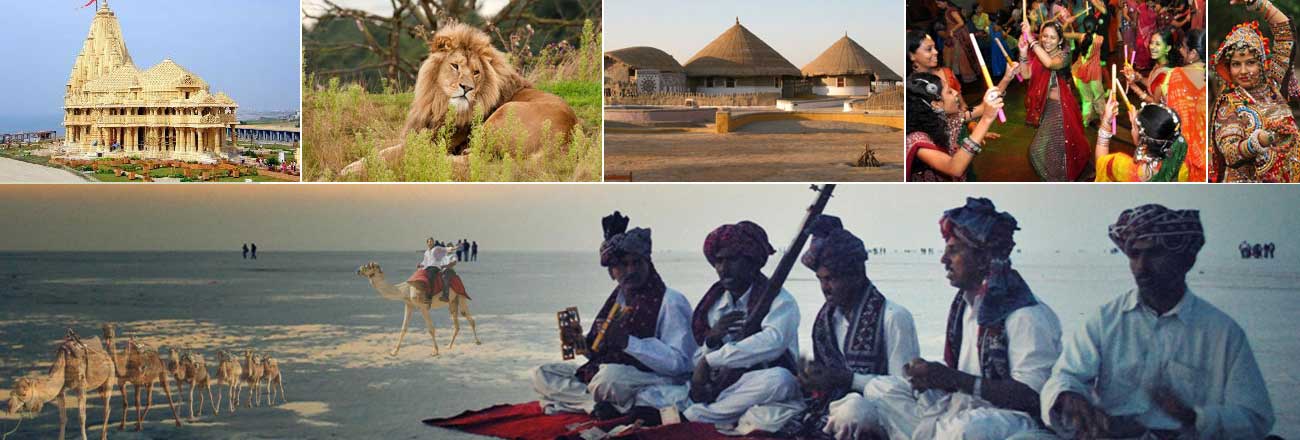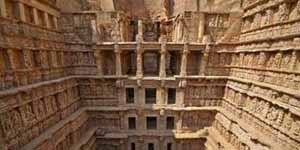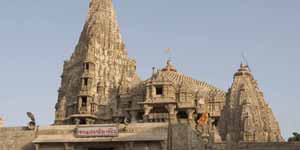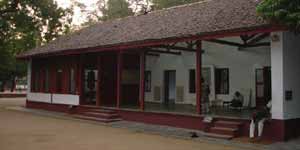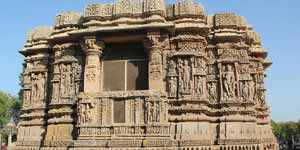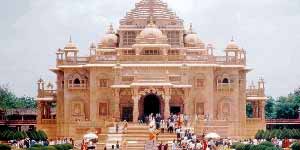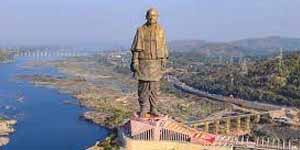
Rani Ki Vav, Patan
Rani-ki-Vav, on the banks of the Saraswati River, was initially built as a memorial to a king in the 11th century AD. Stepwells are a distinctive form of subterranean water resource and storage systems on the Indian subcontinent, and have been constructed since the 3rd millennium BC. They evolved over time from what was basically a pit in sandy soil towards elaborate multi-storey works of art and architecture. Rani-ki-Vav was built at the height of craftsmens' ability in stepwell construction and the Maru-Gurjara architectural style, reflecting mastery of this complex technique and great beauty of detail and proportions.
Designed as an inverted temple highlighting the sanctity of water, it is divided into seven levels of stairs with sculptural panels of high artistic quality; more than 500 principle sculptures and over a thousand minor ones combine religious, mythological and secular imagery, often referencing literary works. The fourth level is the deepest and leads into a rectangular tank 9.5 m by 9.4 m, at a depth of 23 m. The well is located at the westernmost end of the property and consists of a shaft 10 m in diameter and 30 m deep.
But all of this is below ground. From the plain, as you approach, it descends suddenly. Designed as an inverted temple with four pavilions on various levels, it highlights the sanctity of water. As you descend seven levels, you pass sculptural panels of the highest artistic quality, comprised of 500 principal sculptures and 1,000 minor ones.
A masterpiece of architecture, construction, and adornment, Rani ki vav in Patan, Gujarat, is the only stepwell to be declared a UNESCO World Heritage site. It is considered the foremost example of this type of complex architectural technique, demonstrating great beauty in proportion and detail.
It is believed that Rani ki vav (in Gujarat, a “vav” is a type of stepwell) was constructed by Rani Udaymati in the memory of Raja Bhimdev, son of Mularaja, the founder of the Solanki dynasty. The sculptures represent religious, mythological, and secular images. The central theme of the images is around 10 incarnations of Vishnu. At the water level, there is a sculpture of Vishnu reclining on a 1,000-headed snake. Other sculptures represent apsaras (celestial nymphs), strikingly beautiful in feature and pose.
Like other vavs, Rani ki vav was not only used for water collecting; it held great spiritual significance and was also a place for socializing. It was built on the banks of the Saraswati River, and it flooded and was silted over until the 1980s. It was restored to its original design and is now in very good condition.
Monuments in Gujarat
Monuments in Gujarat The words history, heritage, culture and traditions describe the true glory of Gujarat, one of India's very well-known and truly effervescent states. Each nook and corner of Gujarat, steeped in the past, bears witness to the richness and royal grandeur once enjoyed in this region. Today some of the most unique places that testify to the glorious days gone by are none but Gujarat 's timeless forts and monuments.Gujarat forts and monuments make up a very significant part of Gujarat's many types of tourist attractions. In reality it won't be an overstatement to say; Gujarat 's beauty has reached a unique height with these in the background. Modern buildings built in the middle of the old today appear to exemplify the idea of tradition and step forward in time bringing along old principles. The synthesis of old and modern has fooled every heart and mind with precision. In fact, this combination not only speaks of Gujarat's grandeur but also expresses some of India's sublime values, for which it is recognised throughout the world.
You will come across many fascinating details about them while visiting the forts and monuments in Gujarat on your trip to Gujarat. Not only do you enjoy the undying sagas associated with these sites but also the sophisticated architectural styles in which they boast. These sites gasconade's art work is the sight to feast your eyes on.
Looking closely at Gujarat forts and monuments, you can find that most of these sites exhibit a mixture of Hindu, Islamic and European architectural styles. The time of wooden furniture forming an important ingredient in these areas. You'll enjoy every bit of your tour to Gujarat forts and monuments, to state laconically.

